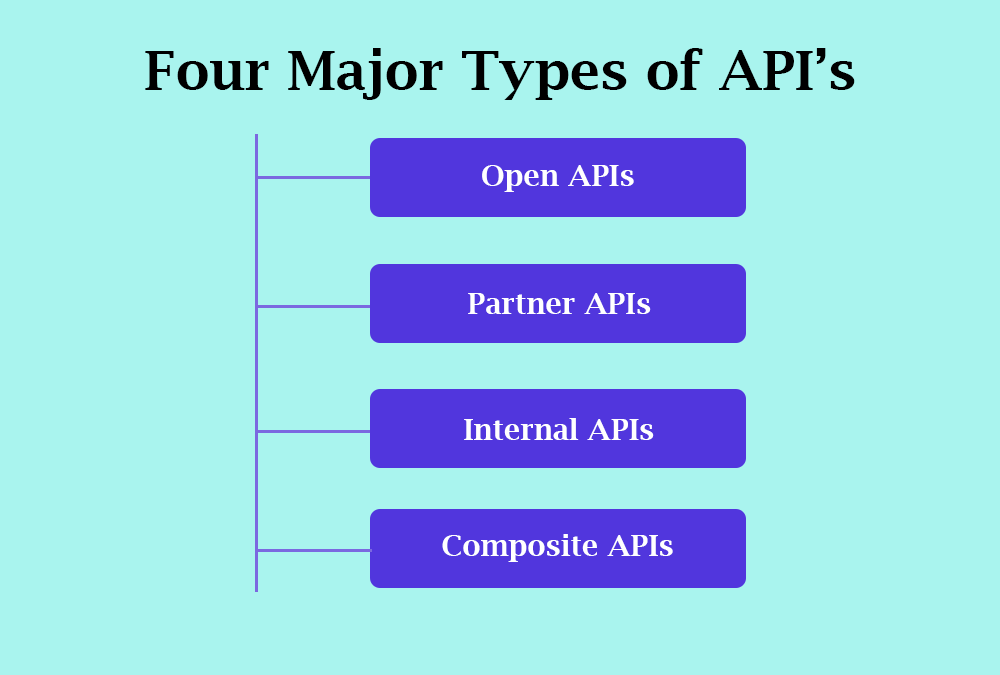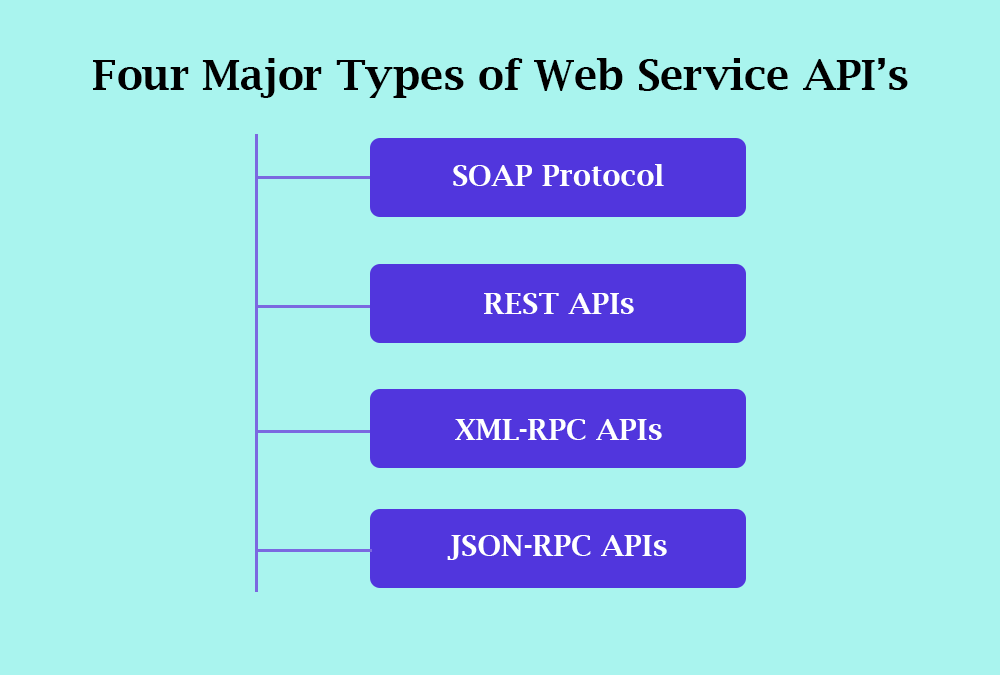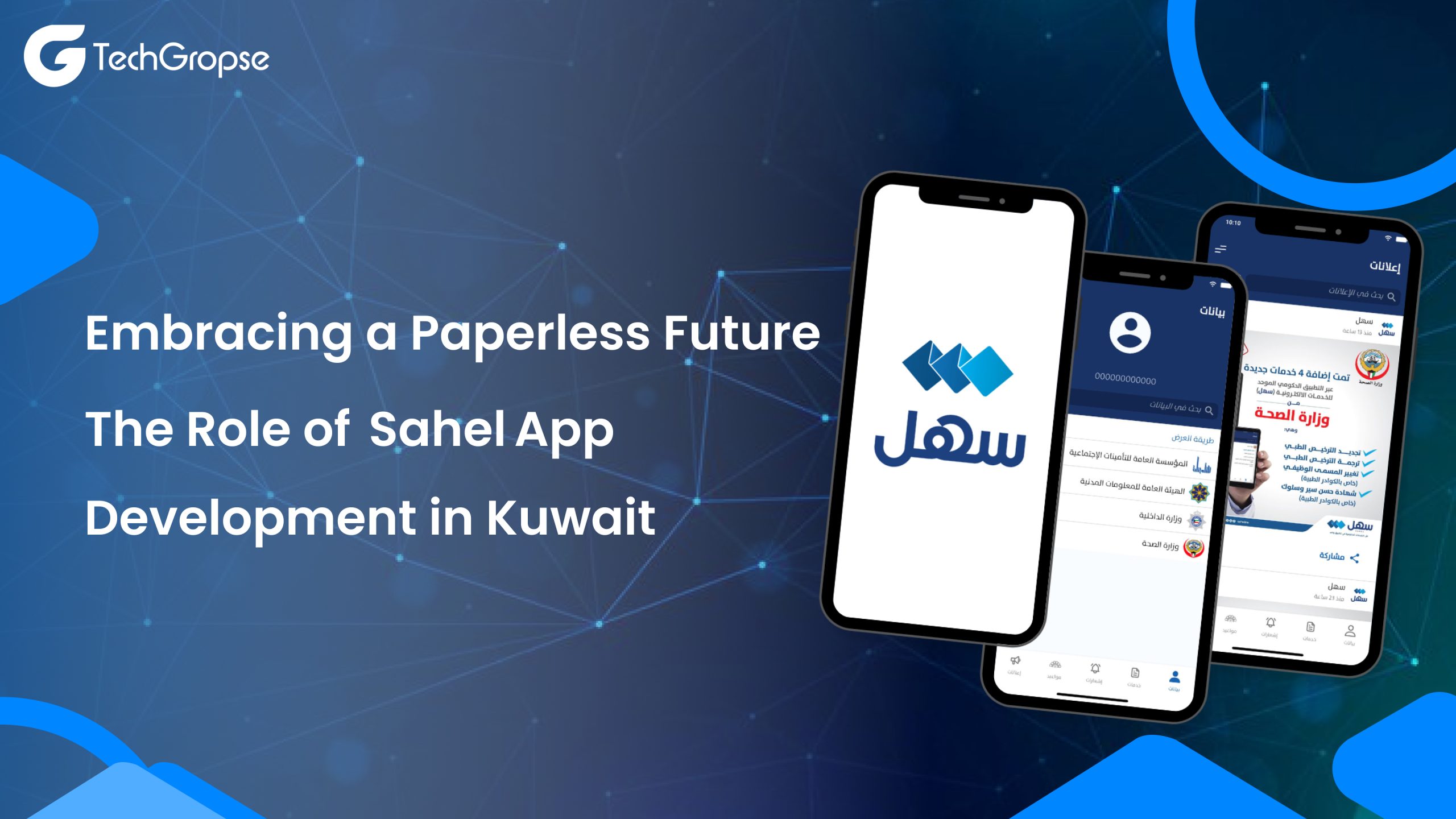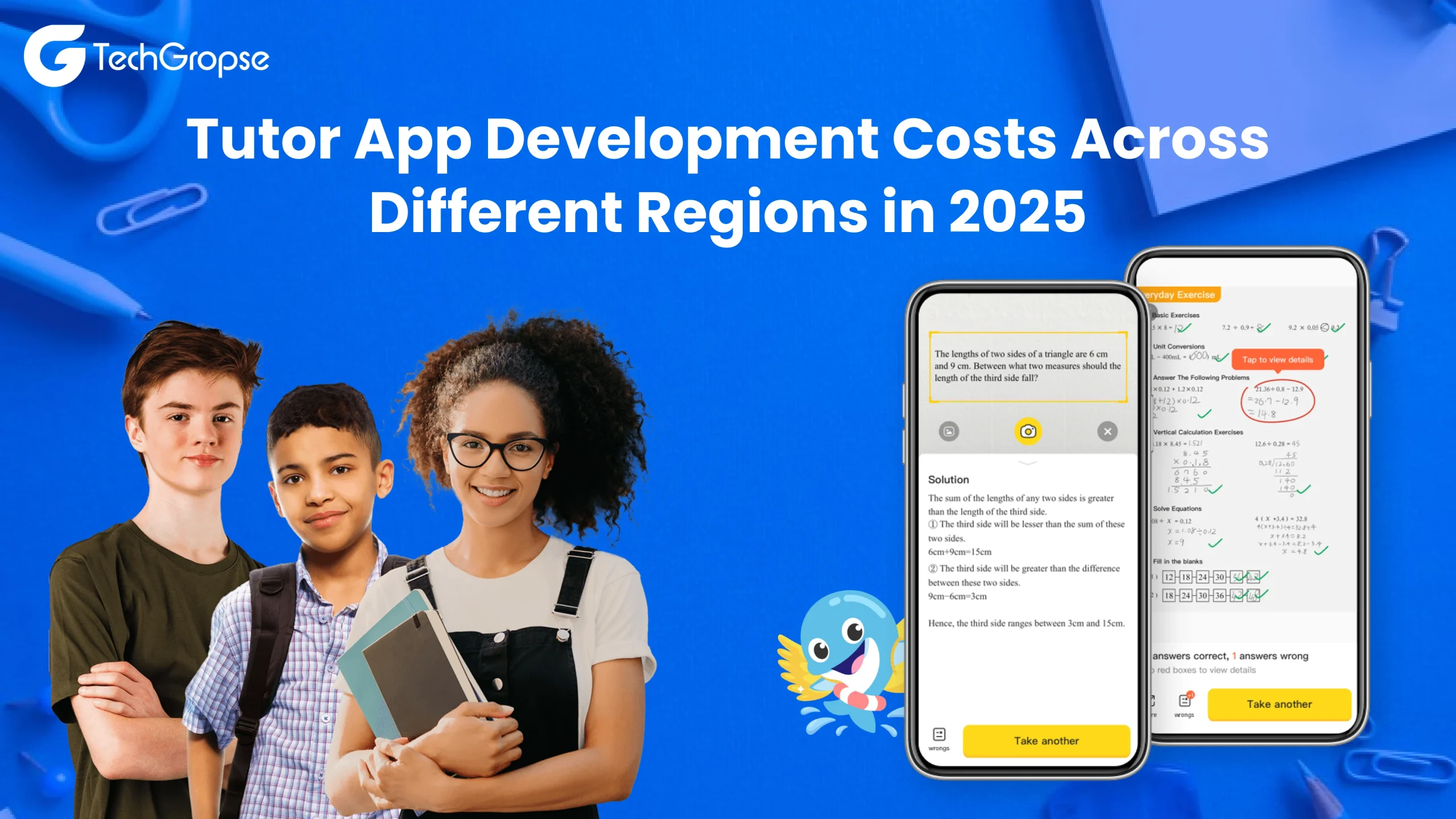These days, everybody is using the word “API development“. But have you ever gave it a thought that what does it mean and for which reasons you might use an API? Do you need a developer to create or use an API on your team?
The heart of every application on the mobile app design is created by API development for most contemporary applications. We will answer your every question related to API development in this article.
This is a comprehensive guide for you to get into the world of APIs- the integral part of mobile apps. So, let’s begin our far-reaching journey in the world of API development:
What are APIs?
Before I lose you with a lot of technical jargon let me tell what are APIs: an API is a way that computer programs can interact with each other. API stands for an “Application Program Interface”. Almost every program, blog, web application, or video game uses APIs. Some businesses also use their APIs to make profits.
The perfect example of APIs is the Facebook login button, using which users can confirm the identity with Facebook API. It simply helps you to skip your username and password, and to show that you are who you want to be using your Facebook account. Developers using Facebook’s API will slow down by not creating a username and password authentication scheme, but instead piggy-backing Facebook’s framework.
Another option to utilize APIs is to view data stored on your website in another network.
This enables the exchange of data with other software and platforms on a smartphone device or network and facilitates the user interface without requiring developers. Also, APIs removes the need to create a comparable software or framework from scratch by making use of the existing one from some other application or software.
Now as we have gone through the definition of API with a perfect example of Facebook, let us go through the various types of APIs for having a better insight into API development. Knowing the types of APIs will certainly help you in knowing how to build an API as APIs are a fundamental part of mobile apps in the modern world.
Major Types of APIs
There are four major types of APIs:

1. Open APIs
Open APIs are also called public APIs. These APIs are open for API developers and hold no restrictions on anybody using or accessing them.
2. Partner APIs
Partner APIs are APIs revealed by/to the strategic business partners or API developers. They are not accessible publicly and require a clear entitlement to use them.
3. Internal APIs
The internal API is an interface that offers access to the API developers of any specific enterprise to the company’s backend information and application functionalities.
4. Composite APIs
Composite APIs are a programming mechanism for sequentially batching API requests to one API call. A client can send an API request with a calling chain and receive one response, rather than several round trips to a server. This saves time for API developers.
These are the four major types of APIs that affect any API development. There are also web service APIs that influence any API development.
Major Types of Web Service APIs
The major types of web service APIs that influence any API development are as follows:

1. SOAP Protocol
SOAP is a messaging protocol used to share standardized knowledge in the application of network services in machine implementation. It strives to deliver expansion, neutrality, quality, and freedom in the process of API development.
2. REST APIs
REST is the acronym of REpresentational State Transfer. RESTful API design is an architectural style of software, which specifies the number of constraints for web service generation. The REST architectural facilities, known as the RESTful API design, provide interoperability between internet computer systems. RESTful API development is used to GET, PUT, POST, and DELETE various data types.
3. XML-RPC APIs
Unlike SOAP and RESTful API development, XML-RPC is a Remote Call protocol that uses XML to encode it for security and uses HTTP as the transport mechanism for the remote call. It is used for executing any block of code on any other computer/server.
4. JSON-RPC APIs
JSON-RPC is a remote system call protocol which is encoded in JSON. It is identical to the XML-RPC protocol, defining only a few data types and commands. JSON-RPC requires alerts to be submitted to the asynchronous service with many calls.
These were the major types of APIs and web services APIs. Now let us go through the building block of APIs for getting a picture of how does API works.
How Does API Work?
First, a data source is required for an API. This would mainly involve a database like MySQL, MongoDB, or Redis, but if you don’t know anything about these databases, then there are easier forms of doing things, like a text file or a spreadsheet. Data source from the API will typically be modified by the API itself But, if you want the API to be “read-only,” it can be separately updated.
An API would then require an application format. If a user requires an API, then a “demand” is made. In the case of this message, the verb (for example, ‘GO’ or ‘POST,’ ‘PUT’ or ‘DELETE’), the URL route, and payload (for example the form or the JSON datum) are included. Good APIs include the guidelines in their documents for making these requests. An API must eventually return an answer.
The API can return a ‘RESPONSE’ after the request is processed to get or save information to the database. In general, this reaction involves status code and payload (usually text and JSON data) (e.g. “404 – not found.”), “200 – all right,” or “500 – Server error.” This response format can also be included in the API documents so that developers can know what to expect when a good request is submitted and do the fast API development.

Alternatively, an API can do many other things, but these three are most important to any API development. Now, as you know, what is API development and what is an API in programming, so let’s see the benefits of creating an API.
Benefits of Creating an API
The API development process provides many benefits to any organization. A few of those benefits are listed below:
1. API for Mobile Application Development Boosts Parallel Work
API requires forming a deal. Providers and developers can work on different tasks parallelly, even by being on the same team. Developers need not wait until updates to an API are released until the next API is reached. Teams will test mobile API development and API’s test dependency by using API development tools.
2. API Development Tools Reduces the Cost of Developing Apps
APIs and programming can be replicated on several different projects. The team of developers doesn’t have to start any API development from ground zero, it will just increase the cost of the project and shift the deadline further. The architecture of API development in Java also allows certain issues to be solved before any code is ever written and helps in developing bug-free applications when it is time to implement APIs with applications.
3. API Development Ensures Good Experiences For Developers
Consumers of APIs are mostly learning API programming for beginners and beginners are capable of enhancing the use of APIs. Well built, well-documented, and stable APIs provide a good developer experience because coding and on-board developers are easier to replicate and the learning curve is minimized for Python API development and Java API development (most popular programming languages for API development).
There are numerous benefits of API development, but these three benefits are the most notable ones. However, does your organization needs API development? This is where organizations get confused most of the time. So, let us discuss whether or whether not you should be using API and how to build an API afterward.
Is API Development Compulsory For Every Business?
Some companies have had tremendous success by knowing how to make an API that consumers or other third parties may use, so you do not have to have an API, particularly though you are building a software-based enterprise. The difficulty of providing an API in addition to a user interface might be too much for a small company or somebody who is learning API for beginners, but it’s still useful to consider where and why an API is necessary.
The following is a list of reasons why you might or should not create an API. This should be a starting point for determining if an API is valid for your application scenario:
GO For API Development IF:
- You want to create a smartphone app or a desktop app someday.
- You want to use modern front-end architectures like React or Angular.
- You have a heavy data site that must be run fast and load data without maximum reloading time.
- In multiple locations or forms, you want access to the same data (for instance: an organizational dashboard and a mobile application encountered by customers).
- You want restricted or full access to your data for clients or partners.
- You want to improve direct API access for your customers.
DON’T GO For API Development IF:
- You simply need a website landing or blog.
- Your appeal is temporary and will not alter or raise greatly.
- You don’t want to extend to other channels (such as web, desktop).
- You do not understand the technological implications of constructing something that you do not understand.
One factor you don’t have to keep from creating an API is that you don’t have an accomplished app developer. In reality, without any custom development work, you might create a serviceable API, but you need to consider the consequences of allowing users to access your info.
Till now, we have seen what is API development or what is API in programming. Now let us go through the process of how to make an API by knowing API terminologies.
API Terminologies
These terminologies will make it easier to understand the API for beginners:
1. API Key
Acronym for Application Programming Interface Key is a special identity for authenticating an API user, creator, or calling software.
2. Endpoint
It is a referenced value used to pass a value in any targeted URL.
3. JSON
JSON is the acronym for JavaScript Object Notion and it is used for passing requests and sending the final responses between two communicating applications.
4. GET
GET is used for gathering resources and it is the same as the HTTP method.
5. PUT
PUT is used for editing any existing data in the databases.
6. PATCH
PATCH is also used for editing any existing in the databases, just like PUT. But PATCH is used for updating a single value in the entire dataset.
7. POST
POST is an HTTP method that is used to send a huge amount of data to any server from some specified resource.
8. DELETE
It is used for removing any dataset from the collection of resources.
9. API Throttling
It regulates the frequency of users accessing any API point at one time.
10. Rate Limiting
Rate limiting limits the rate of single-user access if it detects any unusual traffic from any computer.
API Development Best Practices
When you create a website with confidential or proprietary info, you will want users to log in before they can view it. The same holds for APIs – you shouldn’t make yours available to the public because you expect everyone in the world to have access. Even if you want to locate the data quickly, you might only want to include the API keys to watch who is using it and lock anyone abusing your API.
Security is surely important, but when developing an API, you need to think of several other things:
1. Authentication Methods
How would you like to offer your API access and customer payment for anybody from interior staff or anybody random on the web? You would need a form of authentication if you want to create some restrictions on how and how frequently the API is used. Basic Auth, API Keys, OAuth, and JSON web tokens are all popular choices.
2. Complete Documentation
Developers who wish to use the API need to know how to use it. API Documentation should define the permissible queries, the permitted format, data type, and the API responses. The articles may adopt such common formats or may vary from one API to another.
3. Role-Based Permissions & Route-Based Permissions
Often you need to be very complicated about your authentication rules. For eg, certain parts of your API that public users or consumers can access from internal emerging companies. Developers may create permission systems on roles or routes which prevent unauthorized use in specific sections of your API.
4. Rate Limiting Factor
Typically it is a smart thing for you to discourage anyone from accessing your API too soon when you give the public access to your API. Rate restriction could prevent users from abusing their API, shredding the entire data, or just crashing the app because too many requests are being made.
5. Logging & Analytics
Perhaps you want to know if your API returns an error to a customer. Any request and answer or only those which have failed can be collected by adding logging. Logging or analytics will allow you to monitor the sum of your API, especially in the case of any third-party users.
6. Omitting Side Effects
What about linking up numerous API requests, or beginning background activities with your API, if you want to cause alerts? The events are known as “side effects” and may be omitted from the main request and response but still represent essential activities when your API is built.
7. Scalability of API
The term “scalability” refers to the ability of your API to extend or decrease based on the team or customers’ requirements. For starters, a scalable API can handle 100 users today and 10,000 users tomorrow without making many mistakes. Ideally, a good, scalable API would cost less than not in operation, but without a developer, the degree of scalability is difficult to achieve.
8. Speed of the API
Might not seem like much time, five hundred milliseconds (1/2 a second), but it’s a lifetime for computers. Although the question is not asked, “How fast can your API be?” In 100 milliseconds many successful APIs react. This will also rely on who the customers are and on what their APIs are.
Must-Have Features of Best APIs
Best APIs should have the following features embedded in them:
1. Search By Criteria/ Filtered Search
Triggers are implemented to source data from APIs. Post the first data synchronization, it is understood by all, there will be future changes. However, with all code, creators of software need to be transparent as to how and why improvements and the course of events are going on. Records can be reconciled by time stamps if the API has the flexibility to perform filtered search criteria.
2. Paging & Sequencing
You now have a log of changes that are timestamped, but it’s part of the good code standard to not overwhelm the customer with all changes at once. Paging can monitor both the amount and duration of information a person gets access to every session. There’s more, it can also view the remaining pages. It’s all about optimizing the effectiveness of the API.
3. RESTful Apps
The REST APIs are stateless and lightweight. If you crash, you can try again the mobile app upload process. In the case of SOAP, this is very complicated. Moreover, the syntax from the best programming languages, which makes it simple to parse in some other language for a mobile app developer.
4. Authorization via OAuth
Again, since you have to click on a mouse, the API must be allowed by OAuth as this is simpler than other ways. In brief, cycle time, reaction time, attempts must be taken to ensure that your application is protected, after all by a heap of data.
5. Sorting
To ensure that the end-user gets all the pages of data one-by-one the API can empower the users to sort data as per the time of modification or some other circumstance.
Tools For Developing API (With Coding Knowledge)
Developing an API could face all kinds of problems and a much faster turn-around time for those operating in an Agile environment. So we thought we’d curate a list of the most recommended tech testing resources in the market for you.
1. SoapUI
An open-source API development tool that encourages testing both SOAP & RESTful APIs for use-cases including functionality, stability, and performance. It operates on Java, making it easier for most operating systems to perform operations.
2. Postman
It helps API development in addition to providing you a testing environment for the same using JavaScript.
3. Katalon Studio
It offers an automation research platform for smartphones, API, and networks. Katalan deploys the BDD Cucumber system that bridges the gap in internal interactions between company stakeholders and I.T. teams. As a consequence of this, continued progress can be relayed to interested delegates. Fast to combine DevOps software such as Jenkins, Maven, and Docker with Katalon Studio.
4. Apigee
It is a cross-cloud API management framework, developed by Google Cloud, that allows you to pre-examine live session scenarios while working on proxy APIs. It provides end-to-end API management service and has been regaining top spot in Gartner’s Magic Quadrant survey for the last 4 years.
5. Rest Assured
It is inspired by languages like Groovy & Ruby, this API testing tool is Java-based and primarily for REST APIs. Main features include XPath validation, specification reuse, simple file uploads, and JSON path syntax. Rest Assured can also test Web services based on XML, JSON, and HTTP.
Tools For Developing API (Without Coding Knowledge)
All these tools require no prior coding knowledge:
1. Sheetsu
Sheetsu could be the best way to get started creating an API because you probably already have some data in a spreadsheet that will make up the backbone of your application. Sheetsu takes every Google Sheet and transforms it into a queryable, scalable API.
2. Airtable
The big benefit of using Airtable for your API is that it has a fantastic visual user interface and many other resources. Moreover, as new objects appear in Airtable, you can use Zapier to activate individual actions.
3. WrapAPI
WrapAPI is a popular and incredibly helpful application for scraping data or turning your static website or spreadsheet into a queryable, interactive API. In reality, it’s a little more complex. Specific “custom-side” applications are more likely to get stuck than comparatively basic HTML pages.
4. Restdb.io
It starts easy but is effective if you are a developer. The best thing to like about RestDB.io. Regrettably, you may not apply something like authentication or authorization as quickly as you can on other sites, but you may be able to do it yourself if you have any javascript knowledge.
5. Bubble
The bubble may be the best web KPI development tool for those who don’t code and it is worth mentioning here because it also provides the ability to view the data or workflows via an API. To control access to resources or to mask unique resources, you can hook up in authorization settings with your application.
Everything About API Development
There is no single API architecture solution that fits with each company. The tips listed above are just that – guidance and guidelines that can be used or omitted according to the user situation and necessity. API architecture is important to help the end-user use the API, one of the big reasons. Their specifications should be the roadmap to the design and development of a broad API. While all of the above details can at first seem inconvenient, it is better to delve deeper into APIs and create endpoints alone.
The good news is that the current API platform is accessible from all major programming languages, which you can use to create your API. Most of these structures boost you heavily and you simply have to concentrate on applying your business logic. Designing APIs is an art and it is like designing a GUI for the developers that will be using the API. If you have an app idea in mind then you can always take the help of the best app development company for giving exquisite wings to your app dreams.
API development is crucial for seamless app integration, and partnering with a premier android app development company in New York, Atlanta, Chicago, Los Angeles, Houston, Dallas, San Francisco, or Texas ensures your APIs are robust, scalable, and tailored to your app’s needs.

Hello All,
Aman Mishra has years of experience in the IT industry. His passion for helping people in all aspects of mobile app development. Therefore, He write several blogs that help the readers to get the appropriate information about mobile app development trends, technology, and many other aspects.In addition to providing mobile app development services in USA, he also provides maintenance & support services for businesses of all sizes. He tried to solve all their readers’ queries and ensure that the given information would be helpful for them.










